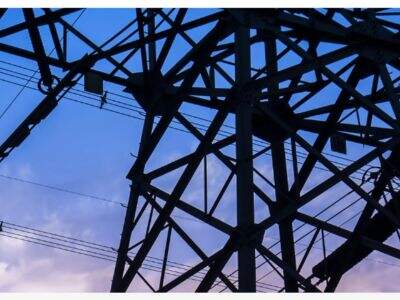As we approach eight billion people on Earth and billions more have a better quality of life, the demand for electricity does nothing but continuing to grow. This is significant because electricity is what runs so many things that we use every day such as our lights, refrigerator and the television. However, increasing demand also creates some serious problems for the climate. One of the problems is how to construct Transformers so that they can transmit electricity safely, efficiently and in bulk back to where it is actually wanted. QXG is here to help you.

Transformers are some of the most significant equipment in our power system. Essentially, they convert the high-voltage electricity generated at power plants into the lower-voltage electric that can safely be used in our homes and businesses. Transformers, on the other hand are big and heavy hence the challenge posed in transportation of these sets to the right locations. Moreover, Transformers are power hungry when they run. This can result in consumers paying high electricity bills and also add to pollution of our environment.
Better Transformers from Different Ideas
Thankfully, there are numerous fresh thoughts being conceived to upgrade Transformers like high frequency oil Transformer and improve working energy-efficient. One interesting concept is to exploit a particular metal in the transformer design. Energy losses on these new transformers are 8% lower compared to traditional transformers using amorphous metal. This translates into reduced power losses as they deliver electrical energy, thereby making them more efficient. Additionally, these new Transformers are much more efficient ready when compared to the older versions lighter and smaller than their counterparts they can be easily transported and even installed.
Another pioneering step is to forge Transformers having clever cooling systems. Fans or pumps in these systems help move air or liquid to keep the Transformers cool when they are functioning Not only does this serve to improve energy efficiency, but it also results in smaller and lighter Transformers which are easier to manage.
Creating Future Ready Substations
We will need to change the entire design of the distribution substation, not just parts in the Transformer like 3 phase Transformer, to meet modern energy needs and improve energy efficiency at large. Eco-friendly materials like wood, energy-efficient lighting and even solar panels, wind turbines to distribute substation better than before. When we care about sustainability, together we share and protect the same environment for a greener way of using energy.
Other smart innovations In addition to using better materials, distribution substations can also be equipped with advanced monitoring systems. These are supervisory control and data acquisition (SCADA) systems that help us monitor how well the substation is working. If there are any issues, they can be immediately resolved to make everything go on well. In fact, SCADA systems can identify Transformer issues before they become critical, enabling you to perform maintenance and replacement as needed.
Using Renewable Energy
One other important difficulty we have would be the mixing of environmentally friendly energy sources — for example solar and wind power — in to the standard strength grid. Compared to the always-on power-output capability of legacy plants, renewable energy sources generate only when conditions support it. So for instance solar panels offer electricity when the sun shines and wind turbines provide power when the wind is blowing.
New Transformers needed Among the problems researchers have targeted, is working on designing new Transformer that can cope with the variable nature of renewable energy. Smart transformers are able to detect fluctuations in power voltage and frequency because they can quickly adjust, then alternate between the surplus and deficiency of energy production. The end result is a controlled feed of energy into the grid in cases where renewables do not produce sufficient electricity, thanks to such smart technology.
Intelligent Transformers Smart technology Transformers are developed so as to enhance cost-effective and reliable electricity supply system.
Smart grid technology will play an increasingly important role in Transformer design well into the future. The smart grid integrates all segments of the power system such as generation, Transmission and distribution to enable communication among them in real time. This grid-tech upgrade helps maximize the efficiency of every vacant kilowatt and reduce blackout threats to the grid.
Due to smart grid technology, Transformers are able to interact with other devices and components on the grid as well. With this, they can modify their functioning using on-the-fly data and distribute power more knowledgeable and fairly. Even better than that, they possess the capability to determine when it is going to fail. Less downtime and lower maintenance costs: With predictive capabilities, this all of a sudden becomes very powerful in an overall power system cost reduction fashion.
 EN
EN
 AR
AR
 BG
BG
 HR
HR
 CS
CS
 DA
DA
 NL
NL
 FI
FI
 FR
FR
 DE
DE
 EL
EL
 HI
HI
 IT
IT
 JA
JA
 KO
KO
 NO
NO
 PL
PL
 PT
PT
 RO
RO
 RU
RU
 ES
ES
 SV
SV
 TL
TL
 ID
ID
 SR
SR
 UK
UK
 VI
VI
 HU
HU
 TH
TH
 TR
TR
 FA
FA
 AF
AF
 GA
GA
 CY
CY
 BE
BE
 BN
BN
 LA
LA
 MN
MN
 MY
MY
 UZ
UZ

